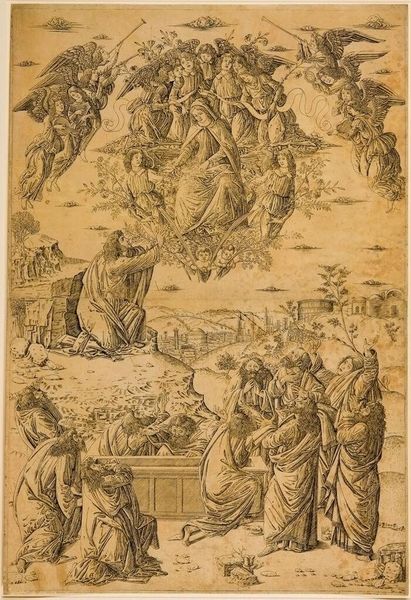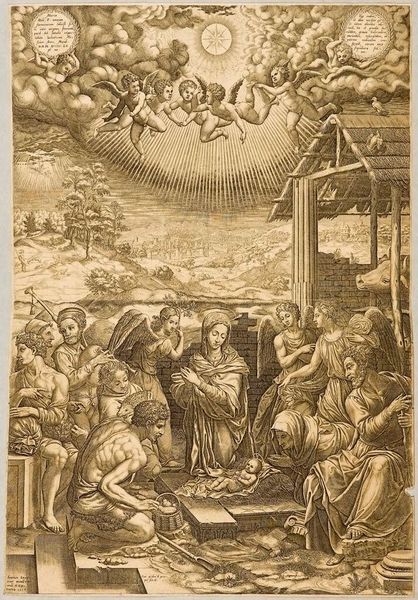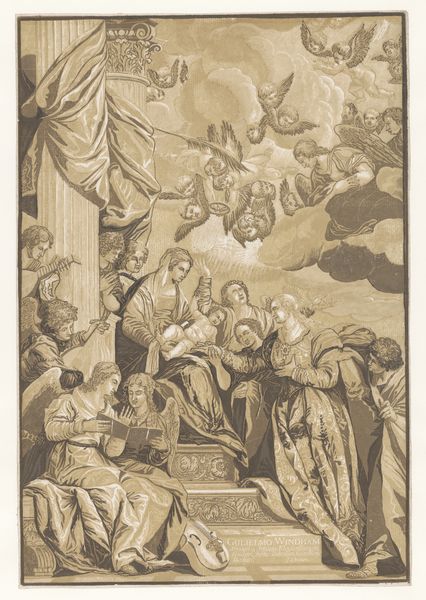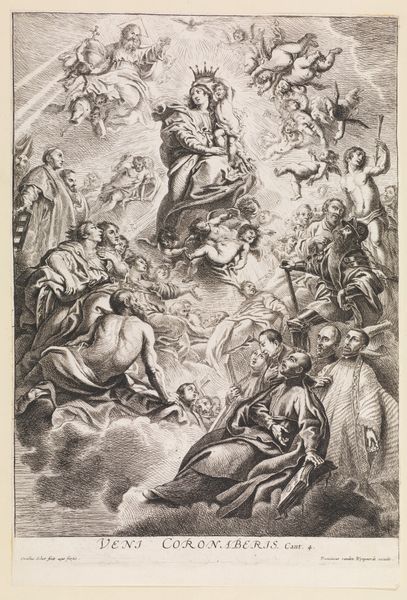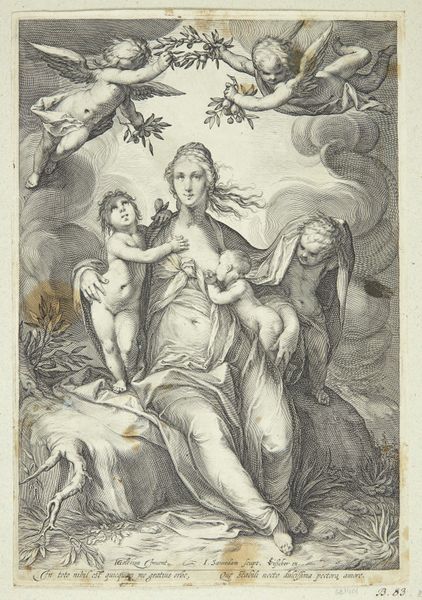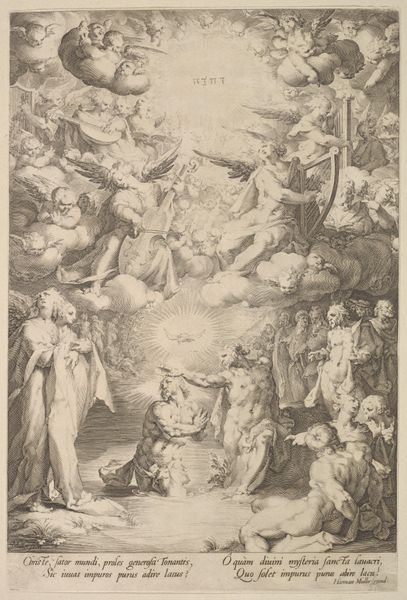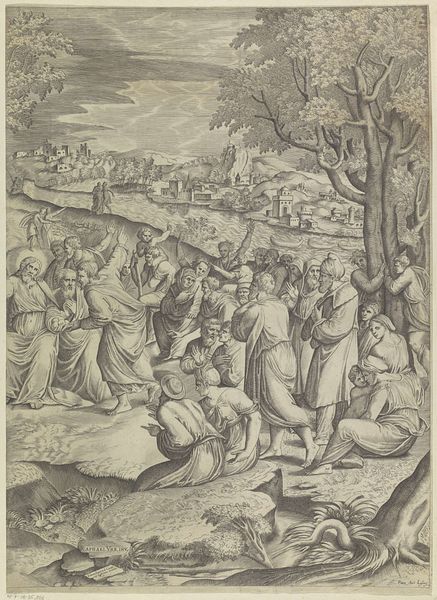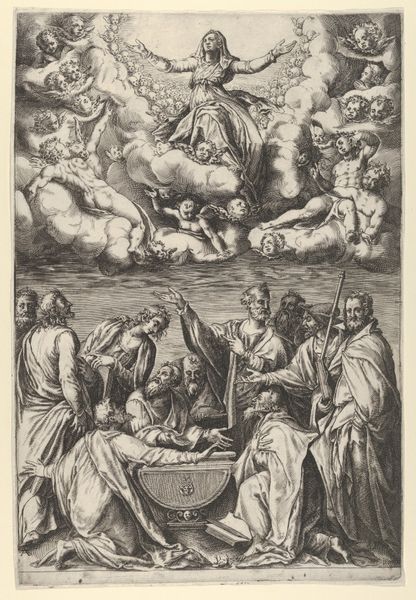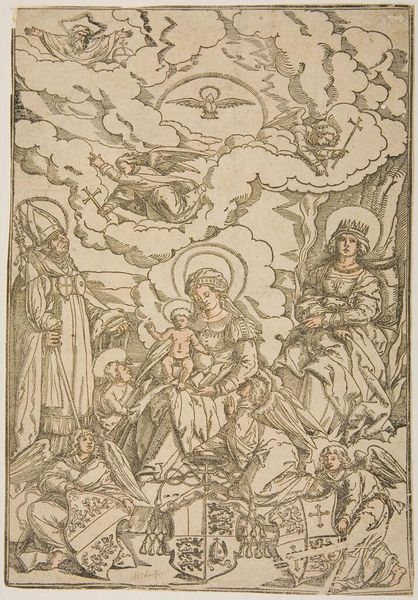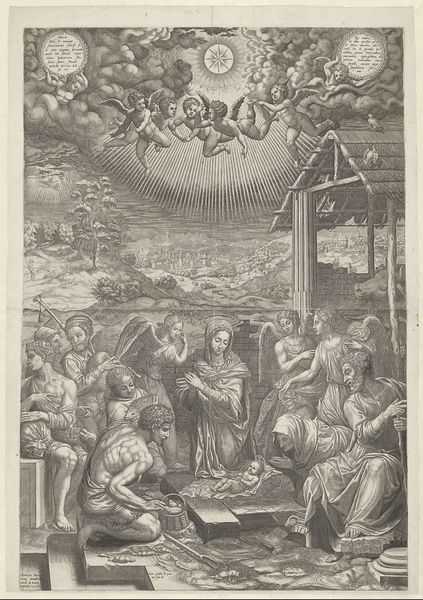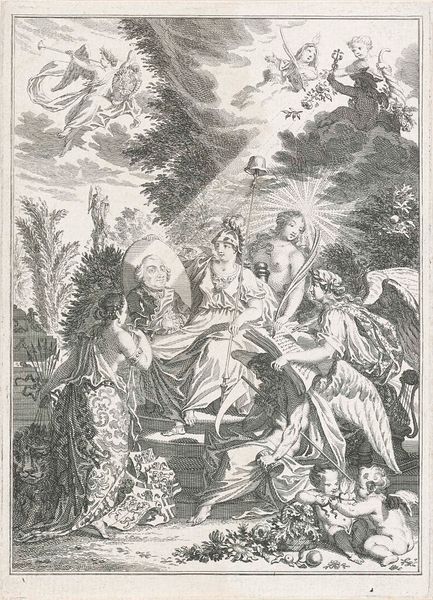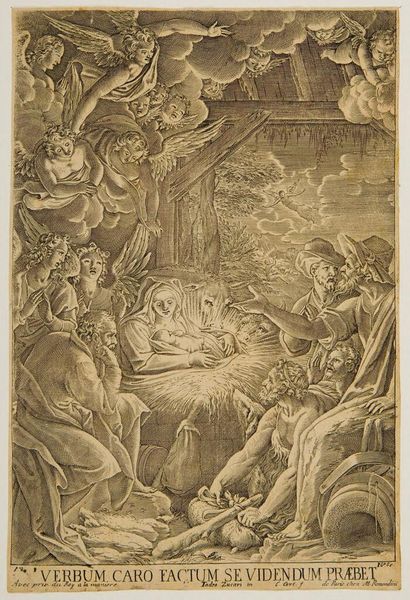
Mystic Nativity, after Botticelli 19th-20th century
Dimensions: 35.6 x 25.5 cm (14 x 10 1/16 in.)
Copyright: CC0 1.0
Curator: This is Charles Fairfax Murray's "Mystic Nativity, after Botticelli," housed right here at the Harvard Art Museums. It's a watercolor, fairly small, only about 14 by 10 inches. It feels very theatrical, don't you think? Editor: Indeed. The tiers of figures are striking. Note how Murray, perhaps reflecting the pre-Raphaelite fascination with Botticelli, has rendered the scene. It is not a literal copy, but rather a creative interpretation. Curator: Exactly. And I think that points to the complex relationship artists have with historical precedent. Murray wasn't simply replicating; he was engaging in a dialogue, perhaps even critiquing Victorian society’s view of religion through his artistic decisions. Editor: I find the chromatic scale very interesting. The interplay of greens and reds, especially amongst the angels, creates a vibrant yet unsettling harmony. The materiality of the paint itself enhances the overall effect. Curator: It really does invite a reconsideration of labor in art production. Murray, by reinterpreting Botticelli, is also commenting on the industrialization of art in his own time. It's not just about what is depicted, but the act of depicting itself within a specific social and economic framework. Editor: A compelling thought. The sheer volume of figures crammed into such a small space generates an intense feeling—of both joy and anxiety. Curator: Precisely. It's a visual feast with complex undertones. Editor: It certainly offers more than meets the eye.
Comments
No comments
Be the first to comment and join the conversation on the ultimate creative platform.
